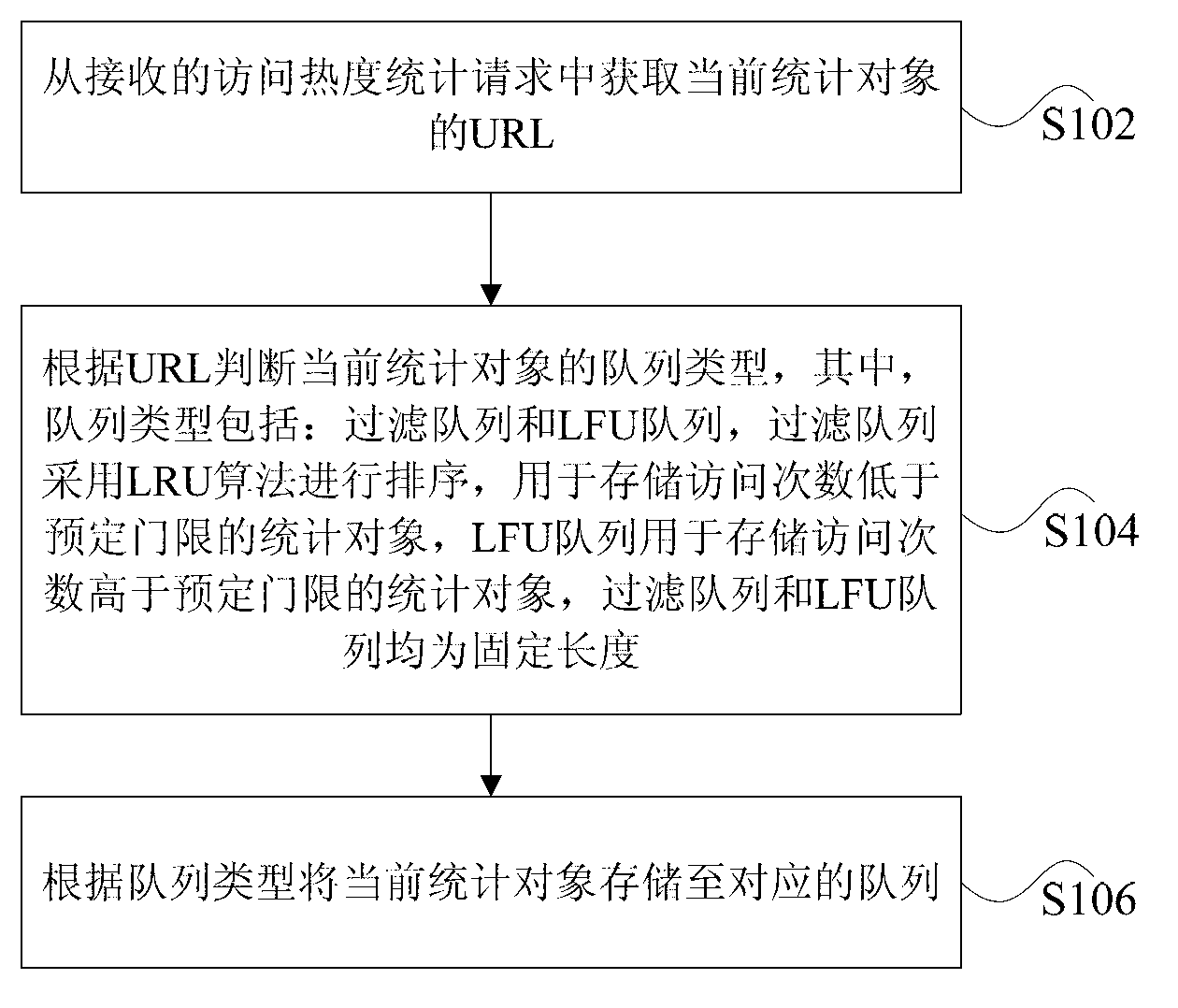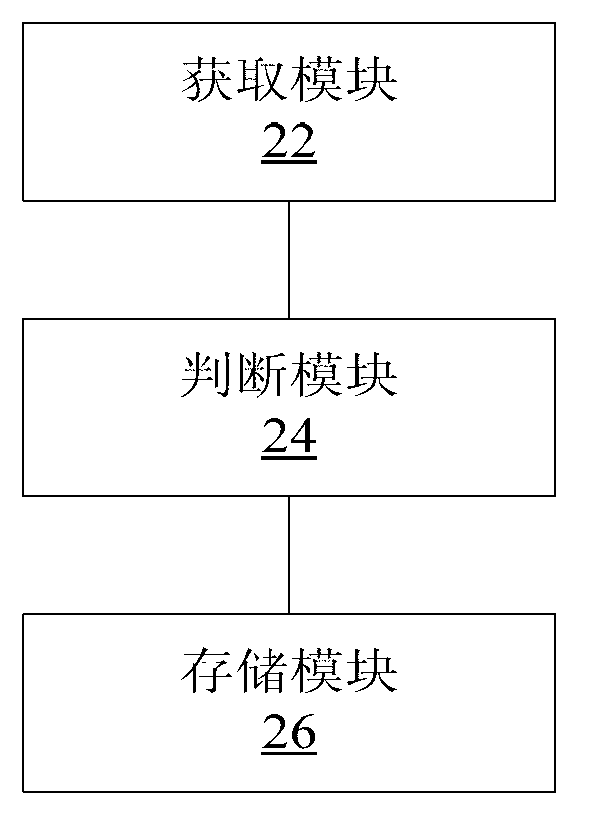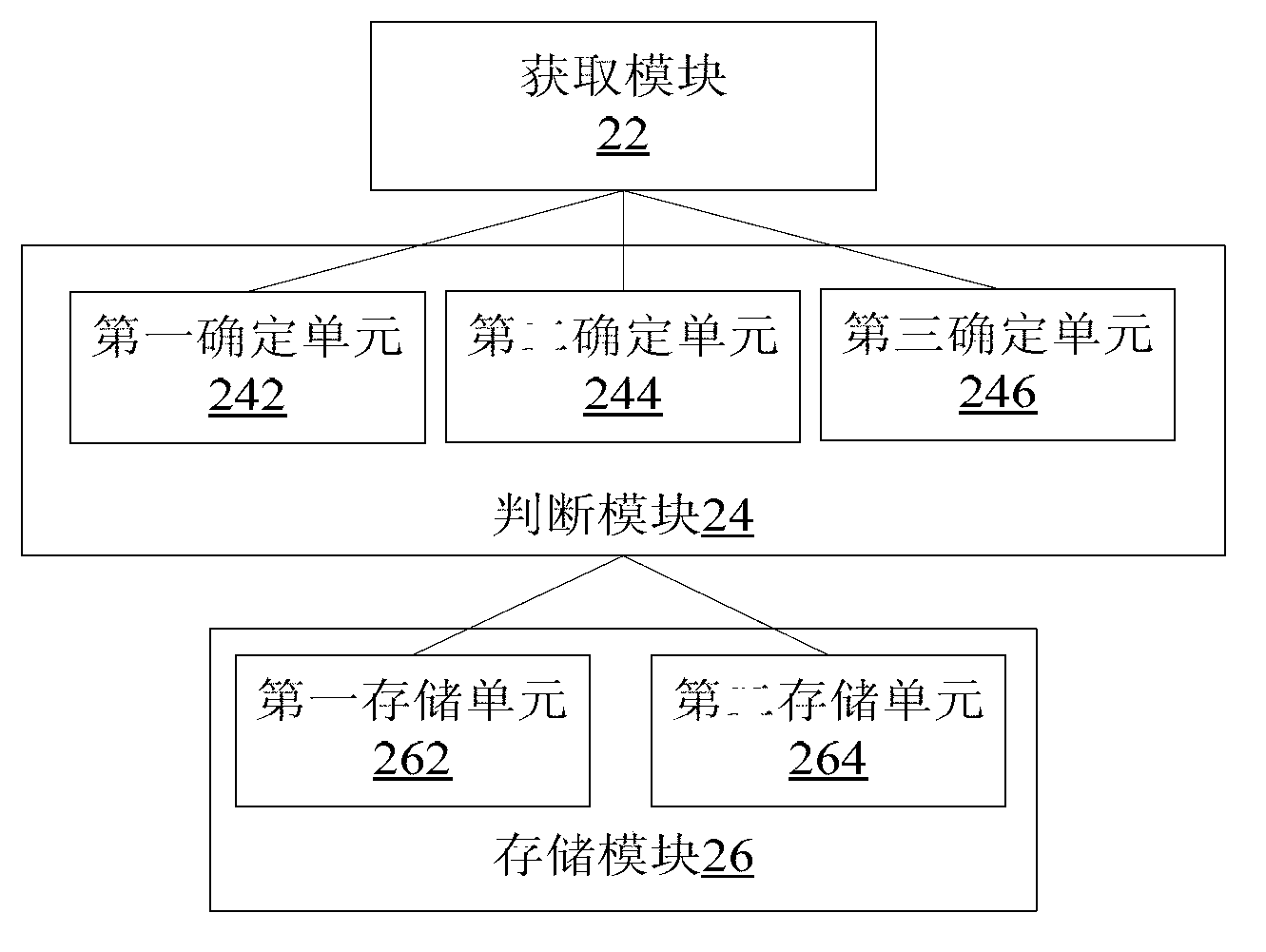Method and device for calculating visit hotness
A technology of access popularity and statistical methods, applied in the field of communication, can solve the problem of large storage space consumed by the LFU algorithm, and achieve the effect of saving memory space and optimizing the LFU algorithm
- Summary
- Abstract
- Description
- Claims
- Application Information
AI Technical Summary
Problems solved by technology
Method used
Image
Examples
Embodiment 1
[0062] Figure 4 It is a schematic diagram of the filtering queue and the LFU queue according to the preferred embodiment 1 of the present invention, such as Figure 4 As shown, the algorithm shown in this preferred embodiment includes two fixed-length queues: a filter queue and an LFU queue, wherein the filter queue is used to filter the access heat statistics of low-frequency request objects, and the LFU queue is used to record the access heat of high-frequency access objects statistics. Figure 4 In , the dotted line indicates that the statistics object migrates from the LFU queue to the filter queue, and the solid line indicates that the statistics object migrates from the filter queue to the LFU queue.
[0063]The filter queue adopts the LRU sorting method, and eliminates the least recently accessed statistical objects at the end of the queue; the LFU queue uses a fixed-length LFU arrangement, and sorts according to the number of visits and the latest visit time of the s...
Embodiment 2
[0065] Figure 5 It is a schematic diagram of the filter queue and the LFU queue according to the second preferred embodiment of the present invention. In this preferred embodiment, considering the Internet access mode Zipf distribution, there will be a large number of one-time access requests per unit time. In order to reduce the impact of one visit on the filter queue , set the filter to the first queue and the second queue. like Figure 5 As shown, the first queue is used to filter an access request object in the queue, and when the statistical object in the first queue is accessed for the second time, it migrates to the head of the second queue.
[0066] The length of the first queue and the second queue can be adjusted according to the network load. When the load is high, reduce the length of the first queue to speed up the elimination of the first queue, thereby reducing the heat statistics load. When the network load is low, When the load is light, the length of the f...
Embodiment 3
[0068] Image 6 is a schematic diagram of algorithm implementation according to the third preferred embodiment of the present invention, such as Image 6 As shown, the access statistics module receives the access statistics request message, obtains the URL of the statistical object in the message, calculates the key code value t of the hash table through the hash function Hash(URL), and locates the hash table according to t table records. According to the queue information indicated by Value in the hash table, determine which queue the current statistical object is in.
[0069] If it is a new statistical object, point the queue pointer in the hash table to the head of the filter queue, and if the filter queue is full, clear the tail statistical object;
[0070] If the statistical object is already in the filtering queue, it is judged whether the number of visits of the current statistical object is not lower than the number of visits of the tail object of the LFU queue. If ...
PUM
 Login to View More
Login to View More Abstract
Description
Claims
Application Information
 Login to View More
Login to View More - Generate Ideas
- Intellectual Property
- Life Sciences
- Materials
- Tech Scout
- Unparalleled Data Quality
- Higher Quality Content
- 60% Fewer Hallucinations
Browse by: Latest US Patents, China's latest patents, Technical Efficacy Thesaurus, Application Domain, Technology Topic, Popular Technical Reports.
© 2025 PatSnap. All rights reserved.Legal|Privacy policy|Modern Slavery Act Transparency Statement|Sitemap|About US| Contact US: help@patsnap.com



